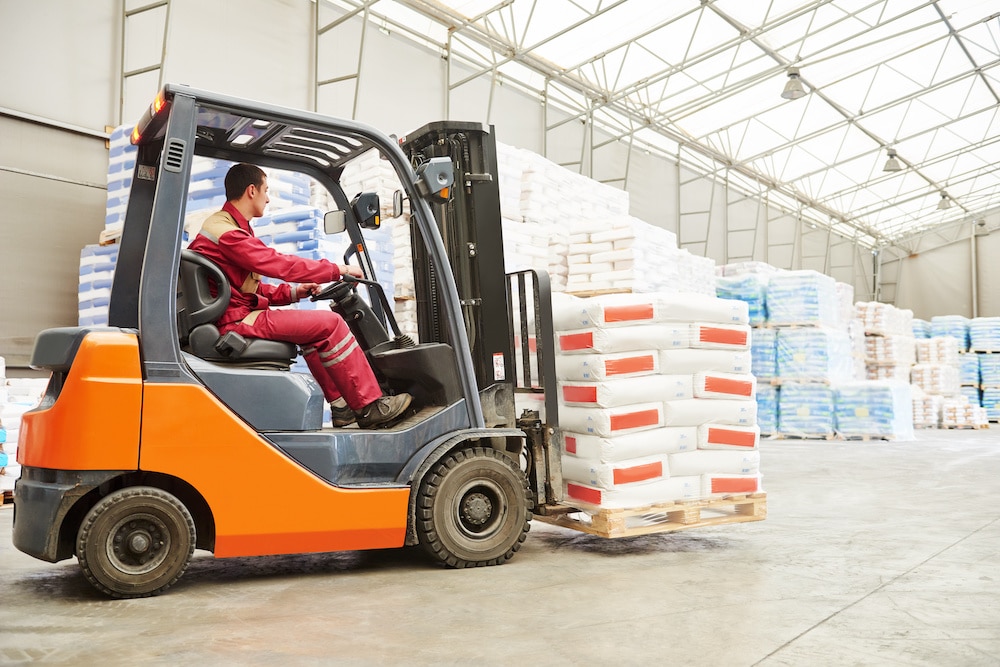Many people are considering a forklift operator job in Australia owing to its good pay. While an entry-level worker makes $59,280/year, skilled workers earn up to $74,166/year!
Moreover, you don’t need to study a lot to reach a good position. But if you’re hesitating, let’s know everything about this choice!
What is the Role of the Forklift Operator?
A forklift operator has to maneuver and lift materials using the forklift and other industrial trucks.
Their job includes loading and unloading goods, transporting goods within an establishment like factories, warehouses, storage sites, or construction areas, and taking good care of the forklift.
They need a clear understanding of their role and responsibilities. This ensures they best use their skills and abilities to work on their career goals.
They work under the supervision of supply chain or warehouse managers. Some duties of a forklift operator are listed below:
- Preparation of merchandise for shipping
- Safe cargo moving between shipping vessels and warehouses
- Product shipment inspection for missing or damaged products received or sent
- Identification of variances from quality standards and reporting them to the quality assurance manager
- Accurate stocking and organizing of heavy materials in a warehouse or other storage
- Communication via radio equipment about organizing, moving, shipping, or receiving materials
- Tracking accurate inventory counts of received and sent products
- Regular inspection, lubrication, and basic maintenance of equipment
- Reporting equipment malfunction to managers
- Adhering to safety standards of the workplace
- Quality assurance maintenance by recording processes
What Education and Training is Required to be a Forklift Operator?
To be a forklift operator, you need the following qualifications:
1. Education
For entry-level forklift jobs, you usually don’t need higher education. If you want a job in a large and reputed company, you must at least have a high school diploma.
If you didn’t finish high school, you must have an equivalent of that, like the General Educational Development degree (GED) in the US and Canada and a Certificate in General Education for Adults (CGEA) in Australia.
Some employers prefer a high school diploma or GED, but it’s not mandatory. So, ensure a higher chance of securing a job by obtaining the necessary degree online or from a school.
2. Training
Since a forklift is specialized heavy equipment, you need proper training to safely operate it, appear for an exam, and secure a Forklift Licence Melbourne.
To enroll in the course, you must have basic English reading and writing skills. The training group will also arrange a numeracy and literacy assessment to ensure you meet the basic comprehension skills.
During the course, you learn to operate the machine with hands-on training under the supervision of your instructor.
Besides the basic mechanical operations of a forklift, you also get custom tips from trainers to improve your skills. You may find the course much easier if you have previous experience in a similar industry.
3. Certification
You can secure an entry-level job only with the previous two qualifications. To increase your chances of working in a big company as a forklift operator, get additional certificates online or from technical schools or community colleges.
If you want, you can secure an entry-level job first and then enroll in these certifications. This boosts your chances of promotions and even allows you to become a forklift training instructor.
You can take your time with the course if it’s an online class. The session is usually around four hours.
You may take your time to study and then take an exam once you’re ready. However, you’ll need to appear for hands-on training before getting that promotion.
Some of the best certification courses include:
a. Stand-up forklift
Used mainly in farm stores, home improvement retail stores, and warehouses, these are compact and easy to maneuver.
b. Sit-down forklift
These are the most common forklift types used in hazardous waste cleaning sites, construction sites, and warehouses. However, they’re a bit more complicated than a stand-up forklift.
c. Aerial lift or Scissor lift
These are used in industries where you need to reach heights around 40 feet, like construction. You need a lot of training for this because of serious safety risks.
How to get a Forklift Job
To pursue a job as a forklift operator, follow these steps
1. Secure all qualification
Pursue a high school or equivalent, get forklift training and ticket, and secure all necessary certifications and hands-on training through apprenticeship.
2. Get experience
Join a construction site or warehouse in an entry-level job to learn more about on-site safety and equipment handling. You must also work on inventory management skills if you get the opportunity.
3. Build your resume
Jot down all the degrees, certifications, and experiences in your resume. Use a simple resume template to highlight your best skills.
Conclusion
If you’re passionate about being a forklift operator, pursue your dream with the right training and bag the endless benefits!

